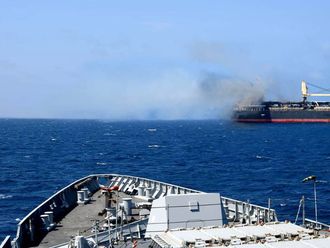Sana'a: As the Egyptians celebrated the departure of Hosni Mubarak's regime on February 11, Yemeni youth rolled up their sleeves and decided to put an end to the 33-year reign of Yemen president Ali Abdullah Saleh.
The protesters camped out in the streets and in Tahrir Square, which bears the same name of the Cairo's square.
Day after day, thousands of people joined the protesters and the resentment against the regime gathered steam. Saleh started to offer concessions in an attempt to appease the anger. He pledged that he would not run for another term and would relinquish power 2013 when his term ends.
That failed to appease protesters and on February 23, the regime received a major blow as ten MPs resigned from the ruling General People's Congress in protest against the government's crackdown on protesters.
Also, the murder of some 52 protesters by government snipers resulted in a wave of defections of army generals, ministers, diplomats and members of the ruling party. This represented a watershed in the history of the uprising as many powers and shakers in the country switched sides with the anti-regime protesters. Saleh subsequently declared a state of emergency.
General Ali Mohsin Al Ahmmar, commander of the army's powerful 1st Armoured Division, and Saleh's long ally, was among the key regime figures that threw his support behind the peaceful protesters. Sadeq Al Ahmer, the leader of the most powerful tribe in Yemen, also declared his support to the protesters and called on Saleh to leave office.
Many observers thought that Saleh's regime was close to collapse, but he managed to weather the mass defections.
In April, the Gulf Cooperation Council (GCC) presented a plan for a smooth transfer of power. Under the plan, Saleh would hand power to his vice-president in exchange for immunity from prosecution for himself and his family.
Saleh kept wavering and did not give it the seal of approval. On June 3 Saleh narrowly escaped with his life when a bomb exploded in the presidential complex killing seven of his personal guards and seriously injuring many senior government officials. Saleh flew to Saudi Arabia for treatment. During his absence, his civilians and military rivals could not remove him from power as his security apparatus remained in place.
In late September, Saleh returned to Yemen and Gulf mediators and the United Nations urged him to sign the transition of power deal.
After months of wavering, Saleh bowed to unrelenting street protests and on November 23 signed the GCC deal.












